The places that escaped the Spanish flu
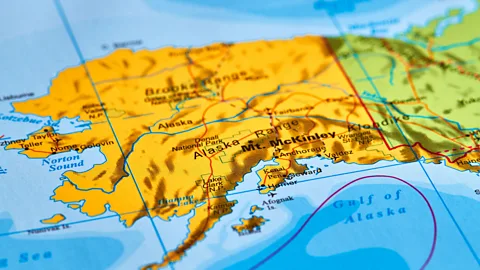 Alamy
AlamyIn places like Alaska, the Spanish flu exacted a terrible toll. But while some communities suffered many deaths, others nearby escaped the carnage. How?
Filthy and frightened, the three young children staggered up the beach. Their tiny frames were feverish and behind them, on board the small sailboat they had drifted ashore upon, lay the bodies of two dead men.
The group had been attempting to flee an outbreak of disease that had devastated their small, isolated village further upstream from the spot where they run aground on the Naknek River in Bristol Bay, Alaska. The three young survivors were quickly taken to a hospital run by a salmon canning company.
Their unexpected arrival at the Alaska Packer Association’s “Diamond O” cannery on the Naknek announced that “Spanish flu” had taken hold in this remote, largely ice-bound part of the world. The inhospitable winter weather conditions had prevented travel to the area between the months of September and May, meaning it had escaped the waves of influenza that swept the world during 1918.
By the time the pandemic had run its course, it claimed somewhere between 50 and 100 million lives – more than the total number of deaths from the terrors of World War One.
The arrival of the boat at the cannery on 4 June 1919 indicated the disease had finally found its way to the remote native Inuit communities that dotted the Alaskan coastline. The next day, the superintendent of the cannery dispatched a team to the children’s village to see if they could help.
You might also like:
What they discovered was horrifying.
Reports from the men on the expedition described the village of Savonoski as being in a “deplorable state” and “wretched”. Nearly all of the adult population in the small cluster of around 10 houses were dead. Those still alive were gravely ill and told how their relatives had dropped even as they walked around. The team from the cannery buried the dead in a mass grave and brought those still alive back to the hospital in Naknek.
It was a picture that was repeated in villages all across Alaska. In just a few days nearly 200 people would die from the disease in the Bristol Bay area, leaving dozens of children orphaned. From some places, stories emerged of packs of stray dogs feasting on the bodies of the dead. In some communities, up to 90% of the population died and the mortality rates were some of the highest in the world.
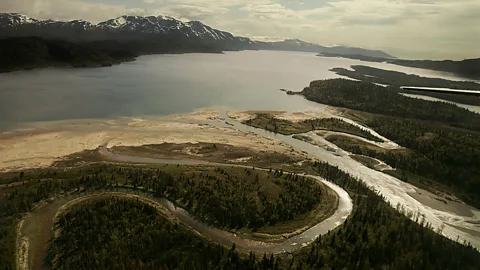 Getty Images
Getty ImagesYet, just a few miles from some of the worst hit areas of Bristol Bay, one community in a tiny settlement called Egegak escaped the disease entirely.
“It is strange to relate that Egegak was the only village on Bristol Bay that was not troubled with the malady,” the Alaska Packing Association’s superintendent at Naknek station, JF Heinbockel was to say in his official report of the epidemic. “The natives there were apparently just as healthy when we left as they ever were.”
Other medical reports stated that some villagers at Egegak showed only mild symptoms of the disease. It appears they were lucky.
“More people per capita died from influenza in Alaska than almost anywhere else in the world,” says Katherine Ringsmuth, a historian who has been piecing together the story of the canneries in Bristol Bay. “Some places like Egegak escaped it and no one really knows why.”
As the world tried to pick up the pieces in the aftermath of the global pandemic, stories began to emerge of similar places that had escaped the virus. There were not many – a handful of remote islands, rural towns, walled asylums and schools were left unaffected.
But the survival of these so-called “escape communities” could prove valuable today as public health officials look fearfully towards the next influenza pandemic.
The lessons they contain are considered so important that the US Department of Defense’s Threat Reduction Agency investigated the handful of the places across the United States that were untouched by Spanish flu in the hope of gleaning some clues about how to keep military personnel safe in the future.
In all, the authors of the report focused on seven communities that they found had escaped the virus, although they say there may have been others they did not identify. Among them were the rural farming village of Fletcher, in northern Vermont, and Gunnison, Colorado, a remote town in the Rocky Mountains. Princeton University in New Jersey, Bryn Mawr College in Pennsylvania, the Western Pennsylvania Institution for the Blind in Pittsburgh and the Trudeau Tuberculosis Sanatorium in Saranac Lake, New York.
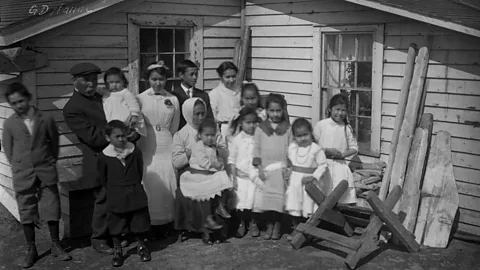 Getty Images
Getty Images“These communities basically shut themselves down,” explains Howard Markel, an epidemiological historian at the University of Michigan who was one of the authors of the study. “No one came in and no one came out. Schools were closed and there were no public gatherings. We came up with the term ‘protective sequestration’, where a defined and healthy group of people are shielded from the risk of infection from outsiders.”
The people of Gunnison managed this by erecting guarded barricades on the main highways in and out of the surrounding county. Railway passengers were forced to submit to two days of quarantine upon arrival.
The sanatorium and school for the blind benefited from being relatively closed communities already, with walls to confine those who lived there also helping to protect those inside from the disease running rampant through the communities on the outside.
Being hard to reach also helped to protect other communities in 1918. The US naval base on the island of Yerba Buena, in San Francisco Bay, was only accessibly by boat. The base’s 6,000 residents were confined to the island and no visitors were allowed ashore. The few arrivals allowed on the island were confined to quarantine, were given three times daily throat sprays, and had to maintain a distance of 20 feet from one another.
When these measures were lifted in November 1918, as reports of cases in San Francisco were on the decline, the base experienced only mild cases, but at least three people did die.
“The moment you open up the gates, the virus enters in the bodies of people who come in,” says Markel. “Protective sequestration is only as good as long as you are doing it.
“The notion that you can shut down a modern city or even a university today is not very likely though. It is extremely expensive and disruptive.”
But there may be some benefit to keeping the virus out for as long as is possible. American Samoa implemented a five-day quarantine for all boats that kept influenza from its shores until 1920. When it finally did arrive, the virus appears to have lost much of its sting and there were no deaths attributed to influenza in a population of more than 8,000. The main island of Samoa to the northwest, however, lost around a fifth of its population to the pandemic.
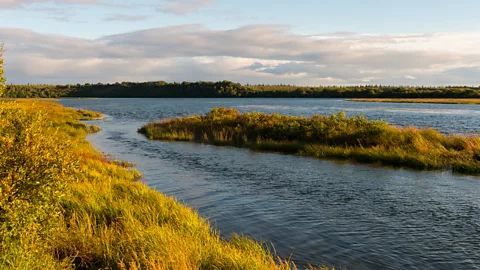 Getty Images
Getty ImagesA similar story unfolded on the on the Australian island of Tasmania, which implemented strict quarantine measures for boats arriving on its shores that required all passengers and crew to be isolated for seven days. When the infection penetrated the island in August 1919, medical officers reported that it was a milder infection than that on the mainland. The death rate on Tasmania was one of the lowest recorded worldwide.
“For some islands, it might have been a mix of chance, remoteness and small numbers of travellers,” says Nick Wilson, a professor of public health at the University of Otago in Wellington, New Zealand. “This experience has some modern relevance – for severe pandemics it might be cost beneficial for some islands to close their borders.”
Other islands had similar success at keeping the pandemic at bay. The French territory of New Caledonia in the South Pacific did not experience an outbreak until July 1921, again escaping with just a mild form of the disease.
It’s not clear why those attempts to delay the arrival of the disease reduced the mortality rates in these places. But research has suggested that over time, as the virus burned its way through populations, it accumulated mutations that naturally reduced its capacity to cause disease.
Another possibility could be that some populations may have acquired a degree of immunity against the pandemic strain from comparatively harmless seasonal flu strains that were circulating in the years running up to 1918.
In Denmark, for example, the pandemic claimed just 0.2% of the population while in Australia just 0.3% died. China also escaped lightly, with relatively few deaths – again something that has been attributed to some existing immunity within the population. Some large cities also reported lower mortality rates than might be expected in places where the risk of passing the virus from person to person is high, perhaps also due to immunity obtained in earlier less deadly outbreaks.
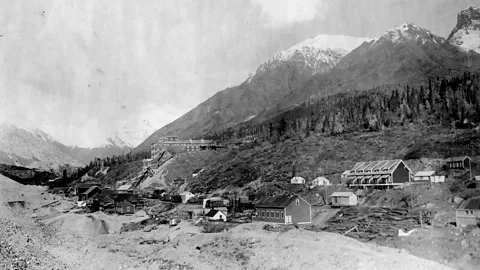 Alamy
Alamy“This is known as the ‘antigen recycling hypothesis’,” says Professor Gerardo Chowell, an epidemiologist at Georgia State University who has been attempting to piece together the events that led to the 1918 pandemic. “In some areas, the older populations particularly were not as affected as much because they had some protection that they probably acquired when they were children.”
While the idea is still debated, it has provided some clues that could help health officials in the fight against future pandemics. Today some countries offer annual vaccinations against seasonal flu strains that can help their populations build up temporary immunity. According to research by Jodie McVernon, an immunologist at the University of Melbourne, this could “provide important protection in the early stages of a new pandemic”.
“The more times you get vaccinated, the more you are exposed to different versions of the flu virus,” adds Markel.
But locations even with this potential immunity still saw people fall ill and some deaths. Just two small chains of remote volcanic islands in Fiji, in the South Pacific – the Lau and Yasawa islands – along with Marajo island on Brazil’s Amazon delta, and a handful of tiny communities in Alaska and the Bering Strait could claim to have been left entirely untouched by the pandemic.
Their isolated locations and lack of outside visitors meant these island communities were never exposed to the virus.
“Transportation was much scarcer than nowadays and the population of Brazil was much smaller, so it is easy to see that Marajo might have got lucky,” says Wladimir Alonso, a technical officer at the World Health Organization who has studied the patterns of the 1918 pandemic in Brazil. “But you would expect the population to remain immunologically susceptible to the pandemic virus.”
 Getty Images
Getty ImagesThis could mean that these remote locations were hit by the virus at a later date, but the very isolation that protected them from the waves of flu hitting other parts of the world meant these cases went unreported.
Blood tests conducted in Alaska, however, have confirmed that some remote populations were never exposed. People in the Yupik settlements of Gambell and Savoonga on St Lawrence Island in the Bering Strait and the even more remote Saint Paul Island further to the south, showed no trace of antibodies to the 1918 virus when they were tested in the 1950s.
While it appears these places were largely protected by their geography alone, other communities took matters into their own hands. Villagers in Barrow and Wainwright in north Alaska posted armed guards around their villages and travel between settlements was prohibited. When scientists tested people living in a number of remote settlements in north Alaska, they found they too were free of antibodies, suggesting they had never been exposed.
It appears that many of these villages were given advanced warning of the oncoming virus as it spread across Alaska by dog sled teams that raced ahead of the infection to alert villages. It was an incredible gamble – mail delivery teams and seal hunters moving through the region were already spreading the virus from settlement to settlement – but one that paid off.
One native Inupiaq community called Shishmaref, situated on a barrier reef island to the north of the Bering Strait, received news in this way and were able to place armed guards eight miles south of the town with orders not to let anyone pass. It was among those villages to evade the flu completely.
“A few places had warning,” says Nicole Braem, a cultural anthropologist with the Bering Land Bridge National Preserve, which is part of the US National Park Service. “Numerous settlements in Alaska were unaffected, largely because of quarantines established along travel routes or their remoteness. Communities at the time were very self-sufficient for food and clothing. They were not as dependent on food and goods imported from elsewhere in the United States [compared to today].”
In the modern world, shutting down settlements like this would be far harder. Few places are now not dependent on goods brought in from around the world. Global travel networks and supply chains could also mean few places would be remote enough to escape a modern pandemic.
 Getty Images
Getty Images“In 1918 they had very little idea about viruses or what caused the pandemic,” says Howard Markel. “Today we would have a better shot at coping with it – we have antivirals, hospitals with intensive care units, respirators and much better surveillance. But we travel further and faster than we ever have before, so the spread could be much faster than we could cope with.”
Some communities in 1918 also appear to have escaped the virus against all logic. The 737 people living in the town of Fletcher, Vermont, defied advice to avoid contact with the outside world, holding a dance and attending a county fair in a neighbouring town. The town even hosted a wedding for a soldier from a military camp in Massachusetts that saw 28% of its population hit by influenza and suffered 757 deaths in the same month as the wedding. Despite 120 guests attending the wedding, the residents of Fletcher appeared to have dodged a bullet.
And this good fortune is perhaps the greatest lesson that the escape communities of 1918 have to offer modern health officials. Many communities that implemented rigid protection and quarantine measures were still hit by the pandemic.
It was a lesson that the communities of Bristol Bay in Alaska learned the hard way.
“Although they knew about the flu and did what they could to prevent it from coming, it arrived anyway,” says Katherine Ringsmuth. “The disease struck so quickly, most people didn’t have a chance to respond.” A fall in salmon stocks may have ultimately helped the Egegak village. “It was a terrible year for salmon as they had been producing so much canned salmon for the war effort in Europe, it caused the fish numbers to decline.
“It might have meant no one had any reason to visit the area. It was just chance.”
Survival, it seems, can sometimes come down to blind luck.
--
If you liked this story, sign up for the weekly bbc.com features newsletter, called “If You Only Read 6 Things This Week”. A handpicked selection of stories from BBC Future, Culture, Capital, and Travel, delivered to your inbox every Friday.

